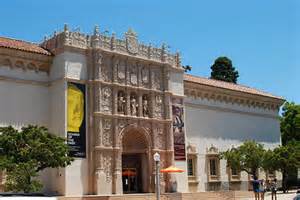- Oct 23 2016
San Diego, CA
The city has been a subject of art for several decades: artists observing, criticizing, and celebrating our relationship to the built environment. This selection of American works provides a glimpse into how our urban world has evolved.
Charles Sheeler’s Delmonico Building (1926) anticipates Charles Demuth’s famed My Egypt (1927), which glorifies a grain elevator. Both depict towering structures from a low vantage point, leading the viewer’s gaze upward and breaking down the composition into clean, geometric lines. Sheeler, an architectural photographer, documented New York’s rapid development and went on to create a series of images of the mechanical workings of the Ford Motor Company, devoid of any human presence and championing the sublime power of industry. Meanwhile, Charles Burchfield’s Rainy Night (1929–30) offers a more narrative view, unfolding as late evening lights are reflected in the wet street, a water tower looms in the distance, a woman climbs into a car.
At the height of the Great Depression, the rise of city tower blocks and skies filled with factory emissions dominate works by George Ault and Ruth Powers Ortlieb. Alfred Eisenstaedt, a photojournalist for Life magazine, contrasts the often brutal characteristics of urban architecture with nature and a vulnerable humanity. More recently, concrete freeways, Dumpsters, power stations, and back lots have become the focus of artists such as Ben Aronson and Kim Reasor. The anonymity of the city is conveyed with an aesthetic appreciation of sharp contrasts of light and dark, dissecting planes, and close observation of the makings of our world that are often otherwise overlooked.
Credit: Exhibition overview from museum website
Exhibition Venues & Dates
- Oct 23 2016
San Diego, CA
